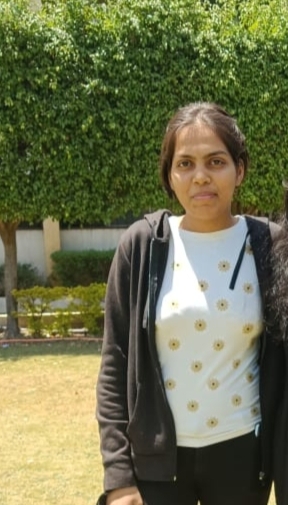Web3: The Future of the Internet
 Bhumika
Bhumika The internet has undergone several transformative phases since its inception. From the static web pages of the early days to the interactive experiences of Web 2.0, each evolution has brought new possibilities and paradigms. Now, as we stand on the cusp of a new era, a concept known as Web3 is poised to redefine the internet landscape once again. In this blog post, we explore what Web3 entails, its underlying technologies, and its potential to shape the future of the internet.
Understanding Web3:
Web3 represents a vision for a more decentralized, user-centric internet. At its core, Web3 seeks to shift control away from centralized entities, such as tech giants and governments, and empower individuals with greater ownership and sovereignty over their digital lives. Unlike its predecessors, Web3 is built upon principles of decentralization, interoperability, and trustlessness, enabled by emerging technologies such as blockchain, decentralized finance (DeFi), and decentralized autonomous organizations (DAOs).
Key Technologies Driving Web3:
Blockchain Technology: At the heart of Web3 lies blockchain, a distributed ledger technology that enables secure, transparent, and tamper-proof record-keeping. Blockchains serve as the foundation for decentralized applications (dApps) and smart contracts, allowing for peer-to-peer transactions and interactions without the need for intermediaries.
Smart Contracts: Smart contracts are self-executing contracts with the terms of the agreement directly written into code. Operating on blockchain networks, smart contracts enable automated and trustless transactions, reducing the need for traditional legal frameworks and intermediaries.
Decentralized Finance (DeFi): DeFi refers to a suite of financial services built on blockchain networks, including lending, borrowing, trading, and asset management. By removing intermediaries and providing open access to financial services, DeFi has the potential to democratize finance and empower individuals worldwide.
Decentralized Autonomous Organizations (DAOs): DAOs are organizations governed by code and run on blockchain networks. In a DAO, decision-making processes are automated through smart contracts, allowing members to vote on proposals and allocate resources in a transparent and decentralized manner.
The Promise of Web3:
Web3 holds immense promise across various domains, including finance, governance, identity, and content creation. Some of the potential benefits of Web3 include:
Financial Inclusion: DeFi has the potential to provide financial services to the unbanked and underbanked populations worldwide, enabling greater financial inclusion and economic empowerment.
Data Ownership: Web3 technologies enable individuals to have greater control over their personal data, allowing for more transparent and equitable data ownership models.
Censorship Resistance: By decentralizing infrastructure and content distribution, Web3 has the potential to resist censorship and promote freedom of expression.
Interoperability: Web3 protocols aim to be interoperable across different blockchains and networks, fostering a more connected and collaborative internet ecosystem.
Creator Economy: Web3 enables new monetization models for content creators, such as NFTs (Non-Fungible Tokens) and decentralized marketplaces, empowering creators to directly monetize their work and engage with their audiences.
Challenges and Considerations:
While Web3 holds great promise, it also faces several challenges and considerations on the path to widespread adoption. These include scalability issues, user experience barriers, regulatory uncertainty, and environmental concerns associated with blockchain energy consumption.
Looking Ahead:
As we embark on the journey towards Web3, it's crucial to recognize both its potential and its pitfalls. By embracing the principles of decentralization, interoperability, and trustlessness, we can unlock new possibilities for a more equitable, transparent, and inclusive internet. However, realizing the full potential of Web3 will require collaboration, innovation, and a commitment to addressing the challenges ahead.
In conclusion, Web3 represents a paradigm shift in how we conceive of and interact with the internet. By harnessing the power of blockchain and decentralized technologies, Web3 has the potential to transform industries, empower individuals, and reshape the internet as we know it. As we navigate this new frontier, let us seize the opportunities that Web3 presents and work together to build a more open, resilient, and decentralized digital future.
Subscribe to my newsletter
Read articles from Bhumika directly inside your inbox. Subscribe to the newsletter, and don't miss out.
Written by

Bhumika
Bhumika
I am a full-stack Web Developer , I love to read and I write alot .